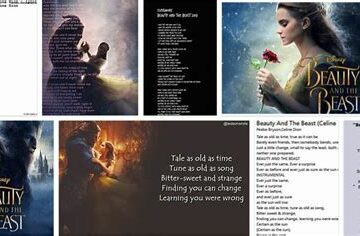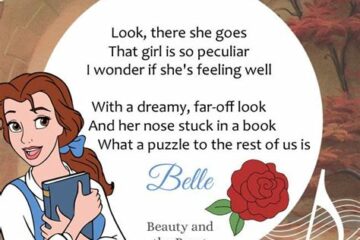Exploring The Character Development In Beauty And The Beast

Exploring The Character Development In Beauty And The Beast
Understanding The Origins Of Character Development In Beauty And The Beast
The character development in Exploring The themes of Beauty and the Beast begins with its rich literary and cultural influences. Originally derived from Gabrielle-Suzanne Barbot de Villeneuve’s 1740 fairy tale, the narrative has evolved over centuries, incorporating moral lessons that resonate with audiences. As the story transitioned through various adaptations, including the popular 1991 Disney animated film, the complexity of its characters grew, providing deeper insights into human behavior and relationships.
A key element in the origins of character development within this tale is its alignment with the historical context of its time. In early tellings, the characters embodied simplistic archetypes; however, with the emergence of the modern retellings, such as the 1991 animated movie and the recent live-action adaptations, a more nuanced exploration of personality and motivation took center stage. Belle, the protagonist, is not merely a beauty but a reflection of independence and resilience, challenging the traditional roles assigned to women in narratives of that era.
Furthermore, the Beast’s character exemplifies the central conflict of transformation, transitioning from a rejected and misunderstood creature to a figure of redemption. This deep divergence from mere superficial traits highlights the psychological and emotional dimensions of character arcs, allowing audiences to connect on a profound level.
Supportive characters also enrich this narrative fabric; they often serve as mirrors to the main characters, allowing for a more thorough exploration of themes such as love, acceptance, and personal growth. Characters like Gaston highlight toxic masculinity, while the enchanted objects provide comic relief while also emphasizing the importance of companionship and loyalty.
This layered approach to character development serves to enhance the moral underpinnings of the story, allowing audiences to reflect on their journeys and the broader societal implications of love and transformation within the context of fairy tales. Thus, the origins of character development in Beauty and the Beast signify a variable tapestry of emotional, moral, and psychological motifs that continue to captivate and inspire generations.
Exploring The Transformation Of Belle Throughout The Story
Belle, the protagonist of Exploring The character development in Beauty and the Beast, undergoes a profound transformation that reflects her inner strength and individuality. At the beginning of the story, Belle is portrayed as a dreamer, yearning for adventure and a life beyond the confines of her provincial town. She is intelligent, independent, and fiercely loyal to her father, Maurice, showcasing her nurturing qualities. This sets the tone for her character as someone who seeks deeper meaning in life.
As the story progresses, Belle’s circumstances change dramatically when she becomes a prisoner in the Beast’s castle. Initially, she is frightened and hesitant, yet her resilience begins to shine through. Her ability to see beyond the Beast’s exterior, which is marked by his anger and loneliness, demonstrates her empathy. This pivotal moment marks the beginning of her transformation; she evolves from a mere dreamer into a courageous woman willing to challenge not only her fears but the societal norms surrounding her.
Belle’s relationship with the Beast is central to her transformation. Through her interactions with him, she learns to confront prejudice and embrace the idea that true beauty lies within. The gradual development of their bond signifies her growth from a naive girl to a strong, loving woman who sees the potential for redemption in others. The way she tends to the Beast’s wounds and encourages him to express his emotions serves as a catalyst for both characters’ developments.
As Belle becomes more comfortable in the castle, she also begins to flourish in her role as a scholar and a dreamer, further emphasizing her depth as a character. Her love of reading and quest for knowledge not only highlight her intelligence but also symbolize her desire for a life filled with richness and experience. This evolution is significant, as it shows how Belle embraces her individuality, empowering others around her to do the same.
In the climax of the story, Belle’s transformation is fully realized. When she chooses love over societal expectations by returning to the Beast to rescue him, she demonstrates her growth as an individual who prioritizes authentic connections. By the end of the tale, Belle emerges not just as the Beast’s love interest, but as a pivotal character whose evolution embodies the core themes of love, bravery, and acceptance. Through her journey, viewers are reminded of the importance of looking beyond the surface, thereby enriching the story’s overall message of personal growth and self-understanding.
Analyzing The Beast’s Journey From Isolation To Redemption
In the enchanting tale of Beauty and the Beast, the character of the Beast illustrates a profound exploring the theme of personal growth and redemption. Initially introduced as a terrifying figure, the Beast’s journey serves as a poignant exploration of the effects of isolation on the human spirit.
The Beast, once a handsome prince, is cursed due to his selfish actions and transformed into a monstrous being. This transformation not only alters his physical appearance but also serves as a catalyst for his emotional and social withdrawal. Living in his dark and ominous castle, he is isolated from the world, becoming embittered and despondent. The audience witnesses firsthand how isolation can warp character and evict empathy.
However, the arrival of Belle introduces a turning point in the Beast’s life. Through their interactions, the Beast begins to confront his past and the consequences of his prior choices. Belle’s unwavering kindness and bravery prompt the Beast to revisit his humanity and foster connections, igniting a journey towards redemption.
This transformation is not immediate; it is marked by moments of conflict and vulnerability. The Beast’s struggle to embrace his changing nature reflects the broader theme of learning to love oneself and others. As Belle breaks down his emotional barriers, she encourages him to move beyond fear and anger. This dynamic illustrates the idea that true redemption is often born from the willingness to open oneself up to love and kindness.
In essence, the Beast’s journey from isolation to redemption is a powerful component of the narrative. It emphasizes how love and acceptance can transform even the most hardened heart, aligning with the overarching themes present in Beauty and the Beast. Through this journey, the audience is left with an enduring message—that the path to redemption is not just about overcoming one’s monstrous exterior but about embracing vulnerability and the courage to change.
The Role Of Supporting Characters In Character Development
In the enchanting tale of Beauty and the Beast, supporting characters play a pivotal role in enriching the narrative and enhancing the main characters’ growth. These characters not only provide comic relief but also serve as catalysts for transformation, influencing both Belle and the Beast in significant ways.
The enchanted castle’s inhabitants—Lumière, Cogsworth, Mrs. Potts, and Chip—embody the spirit of companionship and loyalty. Their unwavering support for the Beast highlights his inherent goodness despite his exterior. For instance, Lumière’s charm and witty remarks encourage the Beast to embrace his softer side, instigating moments of humor that contrast with the weight of his solitude.
Additionally, the dynamics between these supporting characters and Belle further illustrate her development. Mrs. Potts, as a nurturing figure, provides maternal wisdom, guiding Belle towards understanding love’s true essence. This relationship underscores Belle’s journey from feeling like an outsider to finding a place where she truly belongs.
Another crucial supporting character is Gaston, who acts as an antithesis to the Beast. His arrogance and obsession with Belle not only drive the conflict but also highlight the Beast’s evolution. Through Gaston’s brutish pursuit, Belle is forced to confront her values and ultimately choose kindness and compassion over superficial attraction.
The supporting characters in Exploring The depth of the narrative not only serve to complement the main storyline but also significantly contribute to the character development of both Belle and the Beast. Their presence demonstrates how relationships shape individual growth and facilitate profound change, making Beauty and the Beast a beautifully layered story of transformation.
Exploring The Themes Of Love And Growth In Beauty And The Beast
In the timeless tale of Beauty and the Beast, the themes of love and growth are intricately woven into the narrative, showcasing how transformative relationships can change individuals for the better. The story presents love not merely as a romantic ideal but as a powerful force capable of fostering personal growth and development.
The relationship between Belle and the Beast serves as the core example of this theme. Initially, the Beast’s exterior reflects his inner turmoil, driven by past mistakes and a profound sense of loneliness. As exploring the connection between the two characters deepens, we witness the Beast shedding his rough exterior and embracing vulnerability. Belle’s compassion and understanding become a catalyst for the Beast’s transformation, emphasizing how love can lead to redemption and positive change.
Moreover, Belle’s own character arc is one of growth, as she learns to look beyond superficial appearances and societal expectations. Her journey represents a pivotal aspect of exploring the theme of love; she discovers not only her feelings for the Beast but also her strength, independence, and resilience. This self-discovery allows her to champion her values and fight against the stigma bestowed upon her by the villagers, revealing that true love encourages personal empowerment.
Additionally, the story highlights the importance of acceptance and forgiveness in nurturing love. Characters like the enchanted objects—Lumière, Cogsworth, and Mrs. Potts—embody the idea that relationships thrive on understanding and supporting one another. Their unwavering loyalty and belief in the possibility of change further underline the message that love, when cultivated with care, can lead to profound growth in various forms.
As we delve into exploring the themes of love and growth in Beauty and the Beast, we uncover rich layers of meaning that resonate with audiences. The narrative encourages viewers to reflect on their relationships, promoting the idea that through love, we not only enhance our understanding of others but also embark on a transformative journey towards becoming the best versions of ourselves.
Top 10 Disney Characters You Didn’t Know About
December 30, 2024A Deep Dive Into Disney Princesses And Their Stories
December 29, 2024The Meaning Behind Beauty And Beast Lyrics
December 29, 2024Why Beauty And The Beast Is A Timeless Disney Classic
December 29, 2024The Role Of Disney Princesses In Modern Culture
December 29, 2024Exploring The Themes In Beauty And The Beast Lyrics
December 28, 2024
Leave a reply Cancel reply
Recommended
-
Me Beauty And The Beast Lyrics
August 19, 2023 -
The Friendship Dynamic Of Disney Characters
December 19, 2024 -
Iconic Scenes In Beauty And The Beast And Their Impact
December 6, 2024








